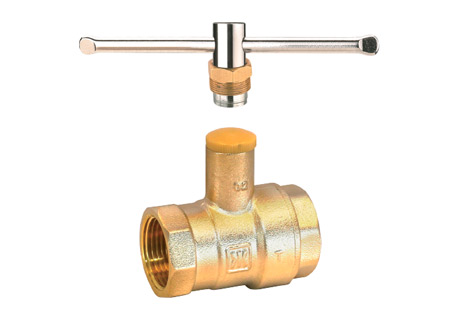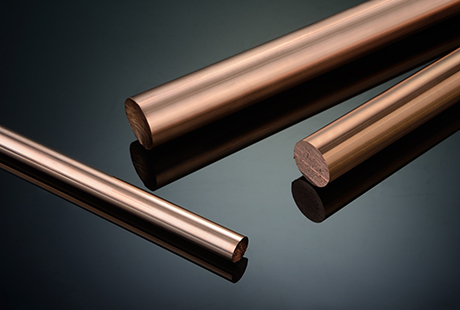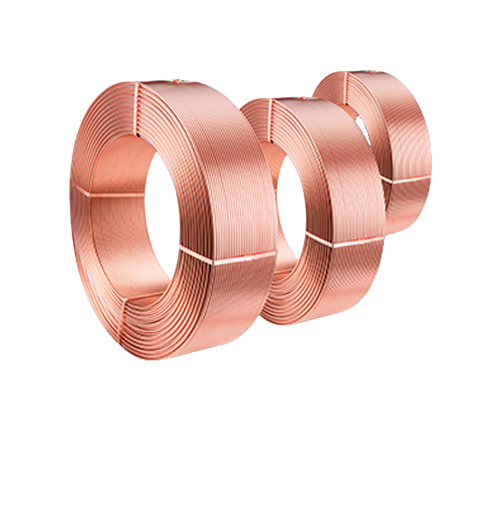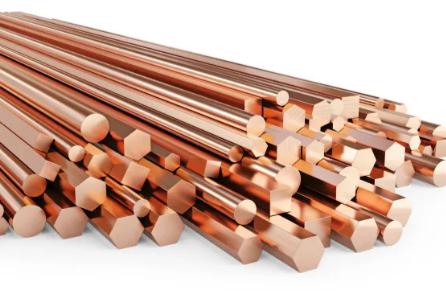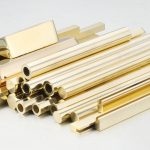
The advancements in the Heating, Ventilating, and Air Conditioning (HVAC) field are transforming how people manage indoor environments. StartUs Insights, a big data and artificial intelligence-driven platform, has launched the "Top 10 Technological Trends in the HVAC Industry (2025)", based on an analysis of over 680 emerging HVAC technology companies. It focuses on the top 10 innovative technologies impacting the effectiveness, efficiency, and environmental awareness of HVAC systems (data and images sourced from startus-insights.com).
Connected HVAC
Predictive Maintenance
Precision Indoor Climate Control
Renewable Integration
Ductless HVAC
Energy Recovery Ventilation
Energy Analytics & Management
Noise Reduction Technologies
Immersive Assistance & Training
Green Refrigeration
HVAC Copper Tubing
Poor energy efficiency, inadequate temperature control, and limited maintenance capabilities are common challenges of traditional HVAC systems. Besides technological innovations such as IoT, smart technologies, energy recovery, and magnetic refrigeration, copper tubing, as a crucial raw material for HVAC systems, plays a more fundamental role in improving the effectiveness, efficiency, and environmental awareness of HVAC systems. HVAC copper tubing is widely used due to their excellent thermal conductivity, strong corrosion resistance, good reprocessing performance, and ease of installation and maintenance:
Refrigerant Transmission: Copper pipes are used for refrigerant transmission in the cooling cycle. Their excellent thermal conductivity ensures the stability and durability of the cooling effect, thereby improving cooling efficiency.
Condenser and Evaporator: The condenser is mainly used to condense steam into liquid, while the evaporator is used to evaporate liquid refrigerant into gas, absorbing heat from the air. Copper pipes, with their excellent thermal conductivity and corrosion resistance, play a significant role in the condensers and evaporators of air conditioning systems.

Air conditioner condenser (left), air conditioner evaporator (right); image sourced from the internet
Throttle: The throttle is used in air conditioning systems to control the flow and pressure of the refrigerant in the system. Copper products are commonly used to make the fine pipes and components in throttles. Their excellent plasticity and weldability simplify and enhance the reliability of throttle manufacturing.
Pipe Connectors: Straight copper pipe products are used in air conditioning system connectors, such as refrigerant pipes and cooling water pipes. Copper products have good corrosion resistance and reliability, effectively avoiding water and gas leakage at pipe connections, ensuring the safe and stable operation of air conditioning systems.

Water heater (left), automotive air conditioning (right); image sourced from the internet
Internally Grooved Copper Tubes in HVAC System
Regarding the improvement of HVAC system efficiency and effectiveness, it is important to mention the application of internally grooved copper tubes.
Internally grooved copper tubes are copper tube products with spiral grooves on the inner surface. Precision is controlled through technical parameters such as outer diameter (D), bottom wall thickness (TF), groove height (H), apex angle (α), helix angle (β), and inner diameter (d).


Internally grooved copper tubes and technical parameter description
Images sourced from Jintian Copper, contact information at the end of the article
Internally grooved copper tubes are defined by
The grooved design is intended to improve heat exchange efficiency, reduce energy consumption, lower material usage, and cater to the needs of different refrigerants. These advantages have led to the extensive use of internally grooved copper tubes in HVAC systems, such as air conditioner condensers, evaporators, water heaters, and automotive air conditioning systems. The specific advantages are as follows:
Increasing heat exchange area: The groove structure increases the heat exchange area between the refrigerant and the air, improving heat exchange rate and reducing pressure drop, thereby significantly enhancing cooling and heat exchange efficiency.
Optimizing fluid flow: The groove structure causes the fluid to form turbulence in the grooves on the inner surface of the tube, greatly increasing the contact between the gas-liquid interface, making heat transfer more uniform and reducing temperature gradients.
Adapting to different refrigerants: Different structures of internally grooved copper tubes are suitable for different refrigerants. For example, trapezoidal internally grooved copper tubes have a higher heat transfer coefficient in R410A refrigerant systems compared to ordinary inner grooved tubes, while M-type internally grooved copper tubes show a significant increase in condensation coefficient at low mass flow rates.
Improving air conditioning energy efficiency ratio: Optimizing the rib parameters of internally grooved copper tubes can effectively improve the energy efficiency ratio of air conditioners, making the product performance more efficient.
Reducing material costs: Due to the improved heat exchange efficiency of internally grooved copper tubes, the number of connections between copper tubes can be reduced, simplifying pipe layout. Additionally, optimizing the design of internally grooved copper tubes can enhance the heat exchange efficiency per unit mass of material, thereby lowering material costs and improving the cost-performance ratio of air conditioning products.
Jintian Copper's Internally Grooved Copper Tubes
Jintian Copper's internally grooved copper tubes (see performance parameters in the image below) feature high dimensional accuracy, excellent heat dissipation performance, high cleanliness, and lightweight characteristics, adapting to the trends of thin-walled, small-diameter, and new tooth-shaped products.

(Image sourced from Jintian Copper, contact information at the end of the article)
Jintian Copper has established eight production bases globally, with specialized production lines for various air conditioning and refrigeration copper tubes, environmentally friendly copper water pipes, and copper fittings at its Ningbo headquarters, Jiangsu base, and Vietnam base. Through automation upgrades and the integration of multiple systems such as SCADA (Supervisory Control and Data Acquisition), MES (Manufacturing Execution System), and WMS (Warehouse Management System), they have built digital factories and promoted intelligent manufacturing.
Main products include inner grooved tubes, horizontal wound coil tubes, straight air conditioning tubes, water pipes, mosquito repellent coil tubes, and a full range of copper fittings. These products serve various needs in air conditioning and other systems.
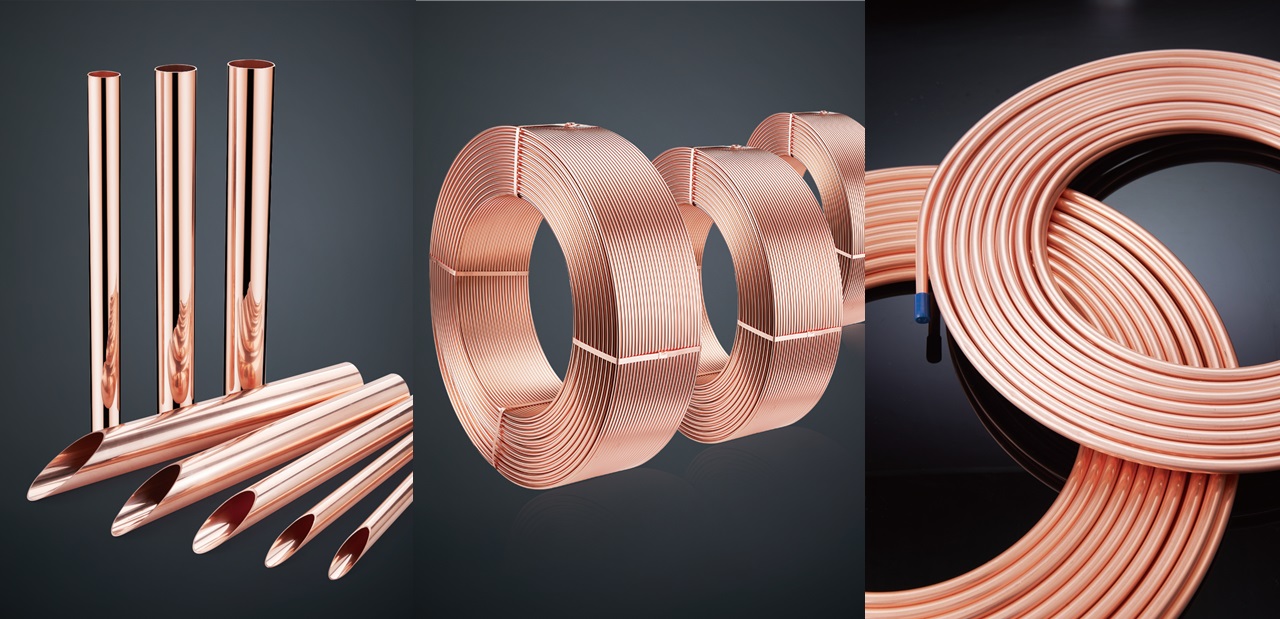
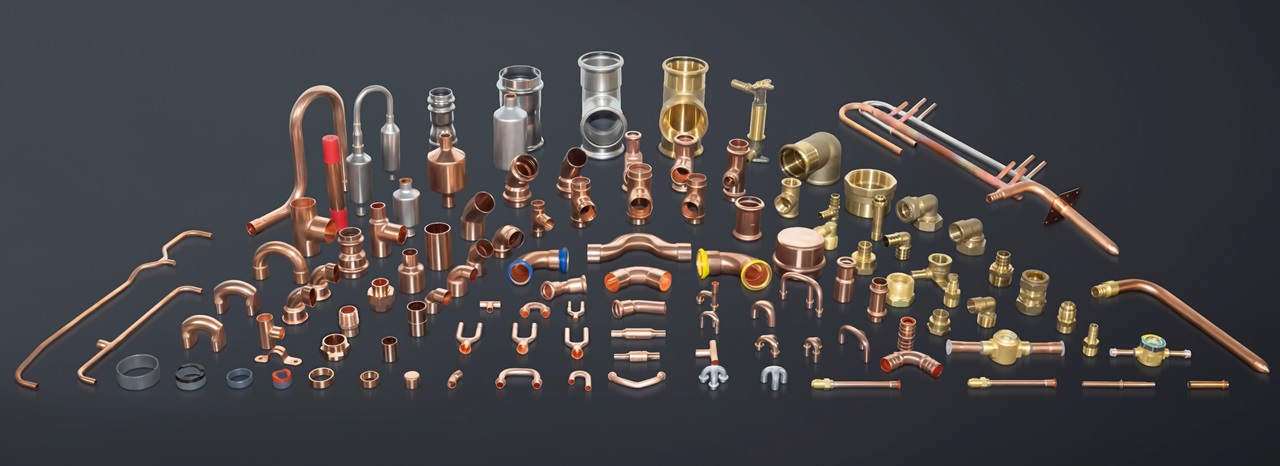

Straight air conditioning pipes (top left), horizontal wound coil tubes (top center), mosquito repellent coil tubes (top right), a full range of copper fittings (middle, bottom).
Product images sourced from Jintian Copper, contact information at the end of the article.
The application of copper pipes in HVAC systems aligns with the industry's trends towards environmental protection and energy saving.
During the copper tube production, environmental protection is emphasized by using eco-friendly materials and processes, reducing the negative impact on the environment. The recycling rate of copper pipes is over 98%, causing no pollution. The energy-saving advantages of copper pipes in HVAC systems are primarily reflected in efficient heat transfer, reduced flow resistance loss, extended lifespan due to corrosion resistance, reduced thermal energy loss, environmentally friendly production processes, and overall reduced energy consumption. These characteristics make copper pipes an ideal choice for energy-saving and environmentally friendly HVAC systems.
The thermal conductivity of copper pipes typically ranges from 300 to 400W/(m•K), far higher than other common metal materials. Coupled with low flow resistance loss, copper pipes can more efficiently transfer heat as the main material of heat exchangers, reducing the energy consumption of refrigeration systems and improving system efficiency.
In HVAC systems, when running refrigerants, copper pipes have thin and smooth inner walls that do not scale, resulting in very low water resistance. This reduces pressure loss, effectively lowering energy consumption, transport costs, and environmental pollution. Copper pipes also resist corrosion from refrigerants, humidity, and oxidation, extending the lifespan of air conditioning systems. A longer lifespan means less frequent replacements, reducing resource consumption and waste generation, meeting energy-saving and environmental protection requirements.

Jintian Copper has long adhered to the sustainable development concept of "ecology over production." Through more than 30 years of R&D investment, they have established four major overseas procurement bases, forming long-term stable strategic partnerships with suppliers in over 100 countries and regions globally, achieving an annual recycling utilization of 400,000 tons of recycled copper. They have developed a globally leading recycling advantage for recycled copper materials, achieving a closed-loop industrial chain from raw material recovery, screening, purification to deep processing, and offering one-stop copper material solutions.
Currently, the company's low-carbon recycled products cover environmentally friendly copper rods, high-precision rod wires, high-precision copper alloy strips, high-conduction precision copper bars, high-conduction high-toughness copper wires, high-precision copper tubing and fittings, high-performance electromagnetic wires, precision valves and fittings, and rare earth permanent magnet materials. These low-carbon products are widely used in many fields such as clean energy, automotive industry, consumer electronics, power and electrical equipment, communication connectors, and smart home appliances.
For more information, please leave a message or add our enterprise service WeChat. We look forward to communicating with you!

 English
English 한국어
한국어 français
français Deutsch
Deutsch Español
Español italiano
italiano العربية
العربية tiếng việt
tiếng việt Türkçe
Türkçe ไทย
ไทย 中文
中文










